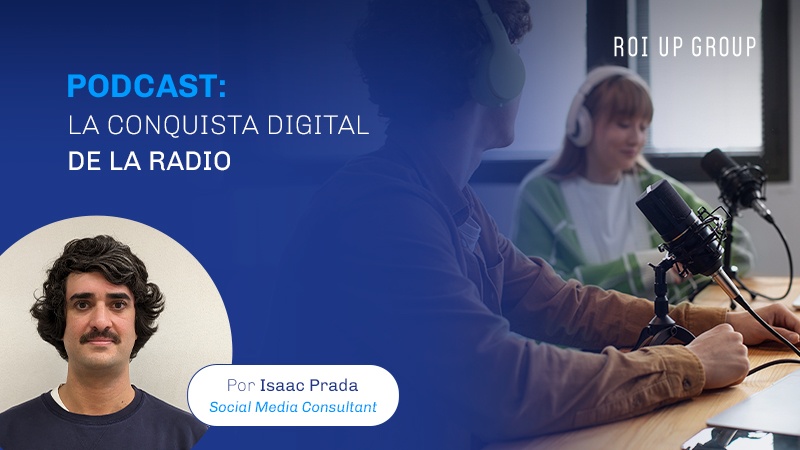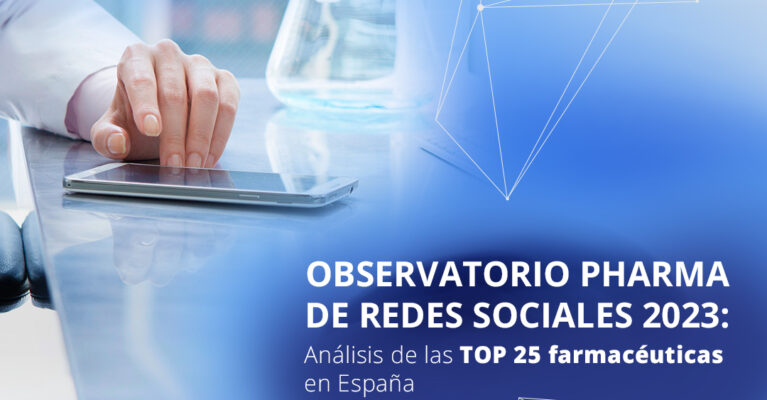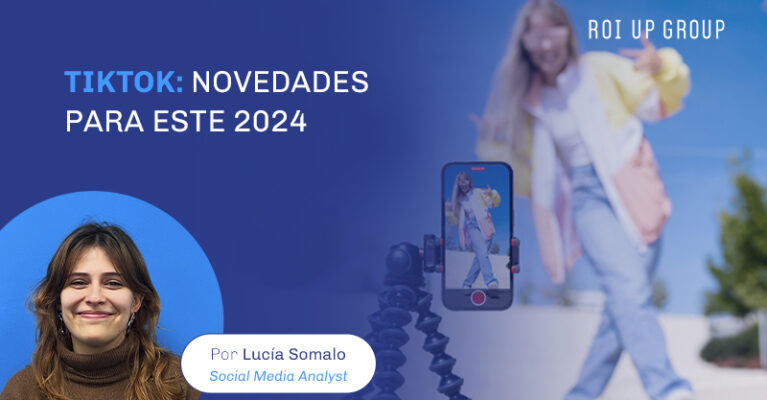
It was a very different time from today. In 2004, the digital revolution, still in its infancy, was advancing by leaps and bounds. The music industry was trembling in the midst of an unprecedented storm caused by the MP3 boom, piracy, the big P2P file sharing platforms and a device that would change everything: the iPod. In the midst of this breeding ground, radio, the second oldest mass media, entered the digital world, mutating into a new format that was different from its predecessor. 20 years later, the podcast, radio’s centennial child, could not be in better health. How did it all come about? What can we expect from the format in the future? What is the outlook in Spain? Join us, ROI UP tells you all about it.
Ipod + broadcast = Podcast
Let’s rewind a bit to Germany in 1991. There, the engineer Karlheinz Brandenburg, after many years of hard work, launched MP3, the audio compression format that kicked off the digital music revolution. The invention allowed sound compression, with almost no loss of quality and freeing up to 90% of the space needed until then.
With this new technology turning music consumption and its powerful industry upside down, American engineer David Winer (his last name already hinted at its potential) began to experiment with the format and in 2004 launched the first podcast in history, Morning Coffee Notes, in the United Kingdom, in which different current affairs were discussed. Merging the name of the iPod, the most famous MP3 player, with the word Broadcast, the innovative format was christened. And it was clear from the outset that the format was here to stay.
The podcast format, relatively cheap to produce, has liberalized both the content and the production of spaces. Virtually anyone can create a podcast, with absolute freedom in terms of the subject matter to be covered and post it on websites or blogs, as well as on specialized platforms. Although radio and podcasts share great similarities, there are notable differences between the analog and digital formats, these are just some of them:
- SCOPE: radio consumption generally has a geographic and temporal limitation, podcasts are available to everyone at all times, both streaming and downloading.
- SEGMENTATION: podcasts have a very defined target, while radio tends to target more transversal audiences.
- DEMAND: radio, although it already posts its programs online, is usually consumed at the time of listening. Podcasts are consumed on demand, looking for a very specific and specialized content at the best time for the listener to consume it.
- ADVERTISING: in traditional radio, advertising is much more invasive than in podcasts. In addition, as there are many podcasts independent of advertising, there is greater freedom for the creation of content, which is not subject to the more traditional codes of communication.
A format in very good health in Spain and worldwide
Podcasts have long since established themselves as a mass format for all types of audiences. According to statista.es,podcast listeners surpassed the 400 million mark in2023. Although radio remains the most consumed ad-supported audio medium, podcasts are already close behind with consumers spending a quarter of their listening time. North America is the area where it is most in demand, but by 2025, Latin America, led by Brazil, is expected to be ahead of the pack.
And what is your audience like? Above all, very young. While a quarter of users are between 16 and 34 years old, those over 55 drastically reduce that percentage.
The world of podcasting in Spain reflects exactly what is happening in the rest of the world. The podcast boom has consolidated the format, which in 2022 already had close to 3 million listeners with a weekly consumption of around 10 hours. The majority profile is quickly defined: centennials, young people under 24 years old. But obviously they are not the only ones. Millennials aged 33 to 44 also represent a very important audience, the most likely to subscribe to their favorite podcasts.
To discover the podcasts that drive us Spaniards crazy, we turned to the latest ranking of the iVoox platform. The first thing that strikes us is how traditional radio has not ceased to be present in the podcast world. Nadie Sabe Nada, the weekly comedy show on SER by Berto Romero and Andreu Buenafuente, tops the list of the most listened podcasts. It is followed by Días Extraños (about enigmas and conspiracies), Dios Patria y Yunque (research on an ultra-Catholic and extreme right-wing organization) and The Wild Project (talks with relevant current affairs personalities).
When it comes to listening to our favorite podcasts, Spaniards prefer to do it alone, with a smartphone and headphones, in the morning and often while doing our routine tasks.
What the future holds for podcasting
The format has not yet reached its peak of popularity. Along the way, new trends, tools and forms of consumption will be added to enrich a world as broad and creative as that of the podcast. These are some of the trends that have been growing in recent times:
- Video: although it completely breaks with the original podcast format, more and more people are demanding podcasts in video format.
- Live podcasting: another way of podcasting that already existed in traditional radio. Physical events to broadcast live and with an audience are gaining relevance among those with the largest audiences.
- AI: The ubiquitous artificial intelligence is already a great tool for detecting interest preferences, creating content, improving audio quality or transcribing texts, among other functions.
- Edutainment: Many people seek knowledge in podcasts and increasingly demand it in an entertaining and enjoyable way.
ROICAST, a great meeting point for digital marketing
At the end of 2022, at ROI UP it was clear to us that podcasting was the perfect tool to publicize the latest news in a world as changing as that of digital marketing. And as always, we didn’t even think about it, we jumped into the pool.
Hosted by our colleague Fátima Abdallah, an expert communicator in PR and digital marketing, ROICAST has been evolving in its almost two years on the air. All kinds of personalities have passed through our studio, always related to marketing, its trends and the different disciplines that we handle in ROI UP Group. From Mayichi, one of the most famous streamers in Spain and Latin America, to the renowned DJ and tiktoker Diode Perfect, through the social chronicler of the TikTok generation Abel Planelles . In addition, other guests from the B2B and B2C digital spectrum have visited our podcast set, such as international brands and clients of our MarTech agency, (Hitachi Cooling & Heating, Quinton Laboratories or flowww, among others).
We are driven by curiosity and the desire to discover the latest in digital marketing from different points of view. With this premise we have discussed topics as different as AI and the vision we have of it in ROI UP, Human To AI, emotional health in the work agenda, the ins and outs of Sitecore or digital marketing in the pharmaceutical sector.
And we’ve only just begun. ROICAST will be around for a while. Listen to us on Spotify, Ivoox, YouTube.
List of Social Media publications
- Were the best claims in history in their early days?
- A inteligência artificial nas redes sociais e nas relações públicas
- Artificial intelligence in social networks and PR
- We launch our 2023 social media observatory for the pharma sector
- Faster than the jewels of the Rally Clásico Mallorca
- Improve engagement in your social media strategy
- Digital Detox in times of confinement? Count me out
- Identity theft in social networks: what to do
- Young people, the new communication challenge for Real Estate (II)
- Instagram marketing strategies for businesses




